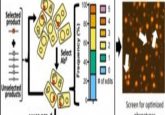CRISPR-Combo combines gene activation and editing

Simultaneous gene activation and gene editing for different targets in plant genomes is made possible with CRISPR-Combo.
Since the discovery of CRISPR/Cas9 a decade ago, scientists have been able to change the genetic code of living organisms; however, this first generation of technology could only remove or replace genes in a genetic sequence. Later versions of CRISPR were able to manipulate gene expression without the need to remove genes in the sequence and instead turn off or on certain traits. But these two functionalities could only be performed separately and independently from one another.
Until CRISPR-Combo.
CRISPR-Combo was developed by researchers at the University of Maryland College of Agriculture and Natural Resources (MD, USA), can edit multiple genes and change the expression of other genes in plants. To do so, the researchers used the Cas9 protein and two different guide RNA structures.
“The possibilities are really limitless in terms of the traits that can be combined,” said Yiping Qi, who leads the research group. “But what is really exciting is that CRISPR-Combo introduces a level of sophistication to genetic engineering in plants that we haven’t had before.”
CRISPR-Combo can be used to boost functionality and improve breeding in plants, for example, to fend off plant diseases like blight. Blight is caused by pathogenic infections and results in the eventual death of plant tissue, threatening food security. In this case, CRISPR-Combo could be used to rapidly produce blight-resistant crops before the disease can cause too much damage and crop loss. This could be done by removing a gene that makes it susceptible to blight, whilst also activating the gene that shortens the plant’s life cycle and increases seed production.
 Can we worm our way out of the plastic predicament?
Can we worm our way out of the plastic predicament?
Researchers have discovered that the Zophobas morio worm acts as a mini recycling plant, with gut microbes that can degrade polystyrene.
Qi’s research group has previously developed other CRISPR technologies including CRISPR 3.0 to activate genes in plants and a method to edit multiple genes simultaneously. For CRISPR-Combo, they needed to show that these two functionalities could take place in parallel without consequences. In this study, they applied CRISPR-Combo to tomato and rice cells.
“As a proof of concept, we showed that we could knock out gene A and upregulate, or activate, gene B successfully, without accidentally crossing over and knocking out gene B or upregulating gene A,” explained Qi.
The researchers also trialed CRISPR-Combo on rockcress (Arabidopsis), a plant often used in research as a model for common crops like corn and wheat. They made the plant more resistant to herbicides through gene editing and activated a gene for early flowering, so seeds are produced quicker. After using CRISPR-Combo, the rockcress yielded eight generations of plants in 1 year, which is twice as much as usual.
This study also demonstrated how CRISPR-Combo can improve plant breeding. Generally, tissue cultures, rather than seeds, are used to develop new varieties of plants, by genetically modifying stem cells from plant tissue that will grow into full plants. These plants will then produce seeds that’ll carry the genetic modifications made. However, the success rate of regenerating certain plants from tissue cultures is just 1%. The researchers addressed this in poplar tree cells by turning on three genes that promote plant tissue regeneration, while also editing traits to form a new variety.
“We showed in poplars that our new method could offer a solution to the tissue regeneration bottleneck, dramatically increasing the efficiency of genetic engineering,” said Qi.
Growth hormones are often needed when growing genetically engineered plants from tissue cultures in order to activate the growth-promoting genes. Qi’s research group applied CRISPR-Combo to directly activate these genes in rice cells. The resulting gene-edited rice did not need additional growth hormones, and they found that the CRISPR-Combo plants expressed more of the edited gene than those grown with hormones.
Next, the researchers will carry out experiments with citrus, carrots and potatoes to test CRISPR-Combo in fruit, vegetables and common crops. They’re also working on developing red rice with increased antioxidants and herbicide-resistant golden rice with improved nutritional content using CRISPR-Combo.





